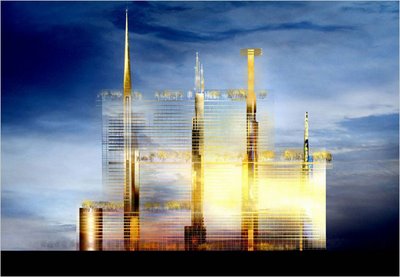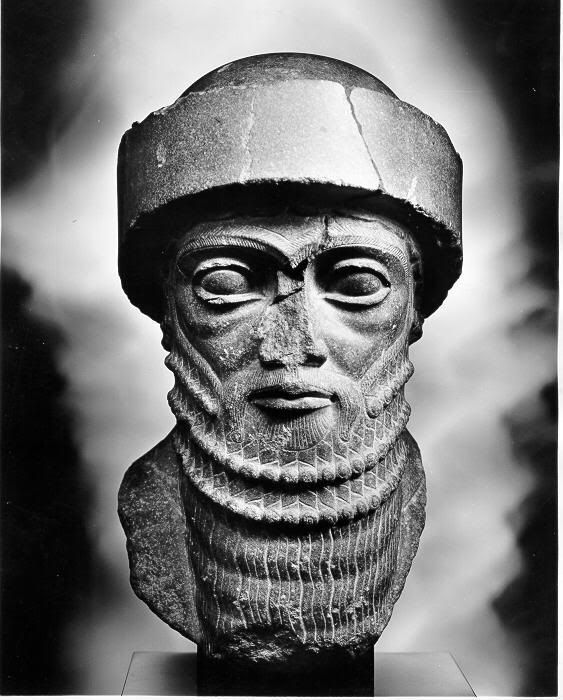
If you happened to catch Dave Chappelle's excellent Block Party movie, then you probably know about the bizarre little architectural fantasy known as Broken Angel, lying on strange little L-shaped block in the Ft. Greene/Clinton Hill/Bed-Stuy area of Brooklyn.
Well, apparently it's been condemned by the City and they're going to hold a hearing to determine whethere to tear down. There's already a small public outcry and a movement to save it, but I'm not sure if there will be time to act.
I think it's an interesting structure with an intersting story, and I would rather have it around than not, but from the way it's been constructed and the fact that they had a fire recently, I'm sort of inclined to believe the City on this one. If it's dangerous, it needs to come down. It's not particularly historic, and I imagine it will take a lot of money to fix, especially considering it was never fully fixed to begin with.
So I'm interested enough to post below the call to arms I received in my inbox yesterday, but not so interested that I think I will personally take a stand. But you know, feel free.
*^*^*^*^*^*^*^*^*^*^*^*^*^*^*^*^*^*
Dear friends,
Hopefully you are already aware of "Broken Angel" the invaluable, totally unique architectural treasure at 4 Downing St. at Quincy, on the edge of Clinton Hill. Seeing it will put a smile on anyone's face, and it is prominent in the film Dave Chappelle's Block Party, which was made in its cul de sac. Artists Arthur and Cynthia Wood bought the old Brooklyn Trolley building, which was then just a single story shell, in the 1970s and have been transforming it ever since, adding towers and turrets and found art objects and colors. It is a residence unlike any other, although the house on the old The Addams Family TV show or movie is perhaps an approximation. If you have never seen Broken Angel, or have not seen it recently, go there ASAP. Sadly, it may not be there much longer.
There was a small fire of unknown cause in Broken Angel two months ago. Damage was minor and Cynthia and Arthur were not harmed. However, the Department of Buildings came in, declared the structure unsafe and evicted Arthur and Cynthia, making them homeless.
I just returned from a meeting with Arthur and Cynthia in the office of NEW YORK CITY COUNCIL Member Letitia James. I learned that there will be a hearing before Judge Sylvia Hinds-Radix of State Supreme Court at 360 Adams St. in downtown Brooklyn 11:30am Thursday, Dec. 14. It does appear that DOB is seeking legal authorization to demolish Broken Angel, perhaps as soon as possible. While no one is claiming Broken Angel is in full compliance with all NYC building regulations, it has stood safely for three decades and, even after the small, quickly extinguished fire, is not at risk of either collapsing or damaging nearby structures.
I am contacting you to both make you aware of the imminent danger to this irreplaceable treasure and to ask you to think about what you can do to help preserve it. Professor Brent Porter of Pratt Institute: School of Architecture is generously contributing his time, but right now what would be most helpful would be an expert from a firm such as Robert Silman Associates | Structural Engineers or another respected structural engineering firm who might care so much for Brooklyn that they would be willing to get involved. That would be invaluable in obtaining the legal protection to prevent Broken Angel's possible imminent destruction.
If that can be accomplished, then the next step will be creating a plan for Broken Angel's long term survival. Plans will need to be drawn up to bring it into compliance with regulatory codes while maintaining as much as possible of the unique structure and appearance that make it such a treasure. Once such plans are approved, dedicated contractors who appreciate the structure's value will need to do the work.
Obviously, all of this of this will cost money. Hopefully this email will inspire you to go over to 4 Downing St. and take another look at it. And that you will agree with me that the existence of Broken Angel enhances the quality of life of every New Yorker. If enough imaginative people do so, maybe a plan can be crafted to convert it into a resource that could be used, not just seen, by New Yorkers, and public funds could be made available.
Precedent exists. The City plans to allocate a few million dollars in public funds to purchase a building for Dick Zigun's Coney Island Museum.
This is not a fund raising letter. It is an invitation to join me, one private citizen with no official status, in trying to one little piece of what makes Brooklyn so special. Cynthia and Arthur have no financial resources. They could easily sell Broken Angel, their only asset, to a real estate developer, who would be happy to guarantee their financial security by demolishing it and building million dollar residences in the now cool location. But they are prepared to sacrifice that security to preserve their handiwork. Maybe there will be a time to give money. But right now, how about donating a little thought, a little time? Ask yourself if you know architects and structural engineers you can contact. If enough people care enough to make a few phone calls and send a few emails, maybe we the public can save and preserve a piece of Brooklyn that really is priceless.
Please feel free to respond and ask any questions. I will do my best to answer them.
Neil Feldman, Publisher
Not Only Brooklyn Arts & Events Newsletter,
718.789.3782




 The three above are pretty amazing. I think the middle one is Liebeskind, but I'm not entirely sure. While I don't think it's my favorite (the one that looks like a flame on the left is awfully pretty), there's something about it that really captivates me. How strange would it be to work there? When you're in a regular office building, it's easy to imagine how to get to some other office, but here, you'd really have to know what you were doing. I tend to be good with directions and like the feeling of getting lost or exploring, and I prefer the crazy streets in parts of London to the straigtforward grid of midtown Manhattan, so I like the idea of a building that you could get lost in. And I would love to stand underneath it and look up.
The three above are pretty amazing. I think the middle one is Liebeskind, but I'm not entirely sure. While I don't think it's my favorite (the one that looks like a flame on the left is awfully pretty), there's something about it that really captivates me. How strange would it be to work there? When you're in a regular office building, it's easy to imagine how to get to some other office, but here, you'd really have to know what you were doing. I tend to be good with directions and like the feeling of getting lost or exploring, and I prefer the crazy streets in parts of London to the straigtforward grid of midtown Manhattan, so I like the idea of a building that you could get lost in. And I would love to stand underneath it and look up. I don't know exactly what is going on here, but it seems like there are five buildings that are connected by some kind of open frame structure, with three levels of park terrace stretching between them. That's so sci-fi I'm getting goosebumps. There's something about the whole thing that puts me off, but I love the concept of making streets and parks in the sky. I'm sure it's a very green building, as well.
I don't know exactly what is going on here, but it seems like there are five buildings that are connected by some kind of open frame structure, with three levels of park terrace stretching between them. That's so sci-fi I'm getting goosebumps. There's something about the whole thing that puts me off, but I love the concept of making streets and parks in the sky. I'm sure it's a very green building, as well.







